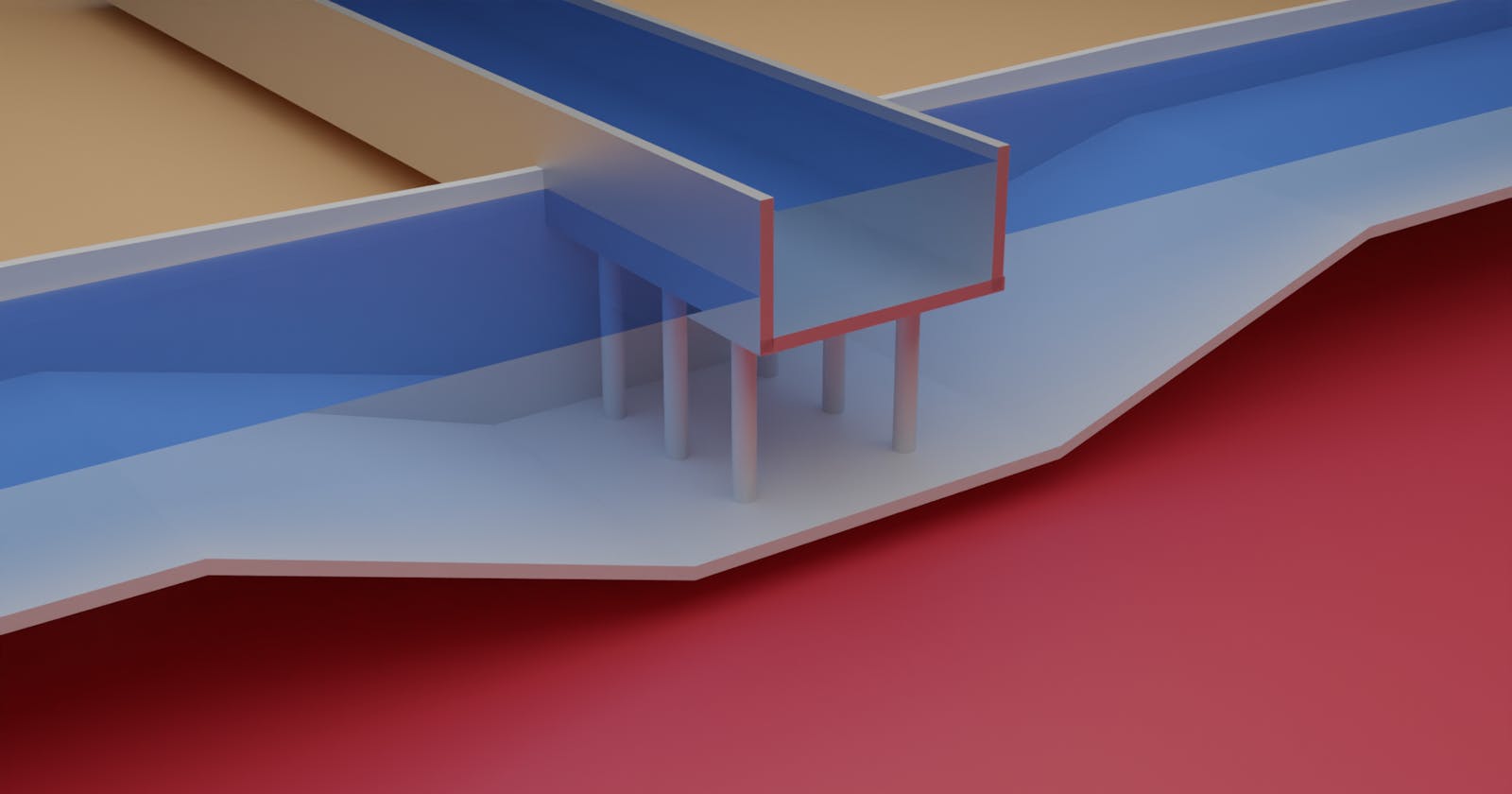A canal syphon is a structure used in hydraulic engineering to convey water from one side of an obstruction to another, typically across a river or a watercourse. The syphon allows the water to flow through a submerged pipeline or conduit, using the pressure difference between the two ends of the syphon to maintain a continuous flow.

Usage
The main use of a canal syphon is to provide an efficient and cost-effective means of transporting water over long distances or across challenging terrain. It is used when full supply level of canal is above the bed of the drainage stream crossing the canal.
Parts

In the figure above, the canal is shown moving from left to right, whereas the drain carries water from top to bottom. As the water level in canal is above the bed of the drain, piers are erected to keep the bed intact. The bottom of the canal bed is bent downward to increase the flow area and maintain an equivalent discharge.
Disadvantages
If velocity is not greater than the silting velocity is not maintained, it becomes difficult to remove silted particles.
Silting is a bigger issue due to the presence of piers.
Command area of the canal is reduced.
It restricts the amount of water that can be transported due to its limited capacity.
Design Considerations
Drain flow is an open channel flow, hence Manning’s equation remain applicable.
Canal flow is treated as pipe flow.
Animation of Inside of Canal Syphon:
Here is an animation I made to demonstrate the Canal Syphon in action.
